
In today's environmentally conscious world, many homeowners are seeking ways to reduce their carbon footprint and create a more sustainable living environment. This article presents an elite selection of ten sustainable home projects that can be easily initiated today.
From solar panel installations to rainwater harvesting and eco-friendly furniture choices, each project offers an opportunity for individuals to make a positive impact on the environment.
Discover practical and actionable steps towards a greener home and a brighter future.
Solar Panel Installation
Installing solar panels is a practical and environmentally-friendly choice that homeowners can make to reduce their carbon footprint. Not only do solar panels harness the power of the sun to generate clean and renewable energy, but they also offer a range of benefits that make them an attractive investment.
One important aspect of solar panel ownership is regular maintenance. While solar panels are durable, they still require periodic cleaning to ensure optimal performance. This involves removing dust, debris, and any shading objects that may hinder their efficiency.
Additionally, homeowners can take advantage of various solar panel incentives, such as tax credits and rebates, which can significantly reduce the overall cost of installation. By taking proactive steps in solar panel maintenance and utilizing available incentives, homeowners can maximize their energy savings while contributing to a greener and more sustainable future.
Rainwater Harvesting
Rainwater harvesting offers numerous benefits for homeowners. These benefits include reducing dependence on municipal water supplies, saving money on water bills, and promoting sustainability.
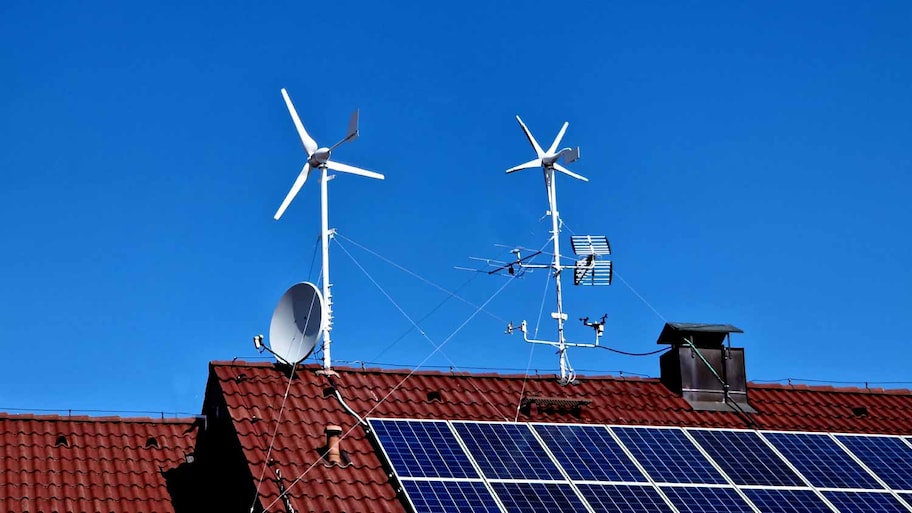
In order to implement rainwater harvesting, there are several DIY methods that homeowners can explore. Some of these methods include installing rain barrels, creating rain gardens, or constructing underground cisterns.
Benefits of Rainwater Harvesting
One of the key advantages of incorporating rainwater harvesting into your sustainable home project is the significant reduction in water consumption. By collecting rainwater, you can reduce your reliance on municipal water supplies, leading to substantial cost savings on your water bill.
Additionally, rainwater is free from chemicals such as chlorine, making it healthier for both your family and the environment. Rainwater harvesting also helps to alleviate the strain on water resources, especially during periods of drought or water scarcity.
Moreover, rainwater can be used for various purposes such as watering your garden, flushing toilets, and doing laundry, further reducing your reliance on treated water.
DIY Rainwater Collection Methods
By incorporating DIY rainwater collection methods, you can further enhance the benefits of rainwater harvesting in your sustainable home project.
One popular method is the use of a rain barrel, which collects rainwater from your roof and stores it for later use. Rain barrels are easy to install and come in various sizes to suit your needs.
Another method to consider is graywater recycling, which involves collecting and reusing water from sources like sinks, showers, and washing machines. By diverting this water to outdoor irrigation or toilet flushing, you can reduce your reliance on fresh water sources.
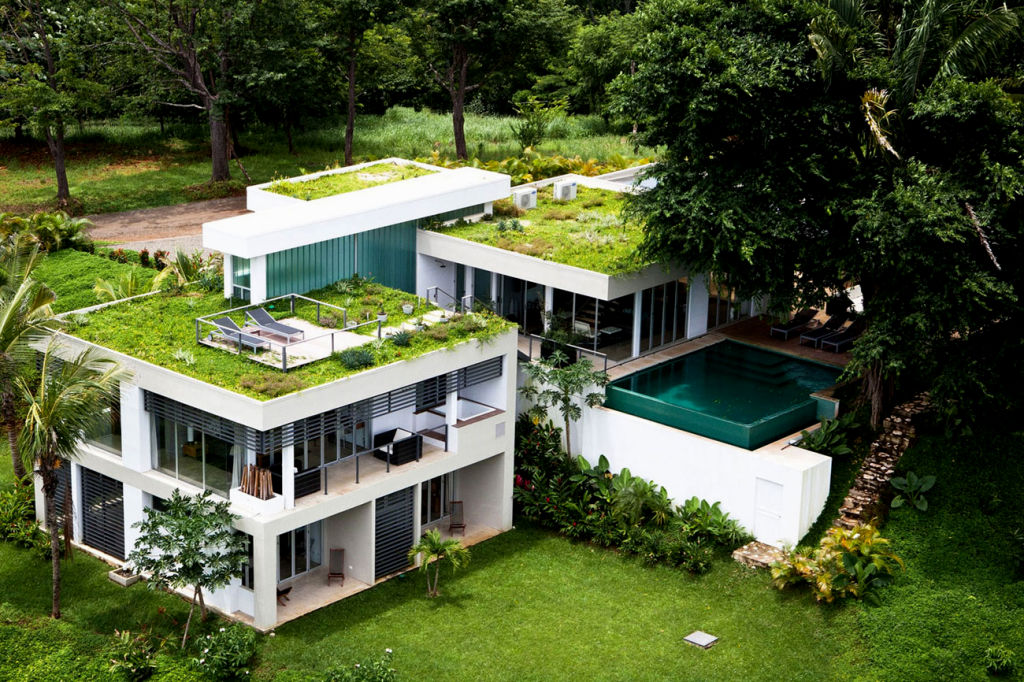
Both rain barrels and graywater recycling are cost-effective and environmentally friendly ways to conserve water and reduce your ecological footprint.
Composting at Home
To incorporate sustainable practices into your daily life, consider implementing composting at home.
Composting offers a multitude of benefits, both for the environment and for your garden. By composting, you can reduce the amount of waste that ends up in landfills, as organic materials such as fruit and vegetable scraps, coffee grounds, and yard trimmings can be turned into nutrient-rich soil.
This soil, known as compost, can then be used to improve the health and fertility of your garden, reducing the need for chemical fertilizers.
There are various composting methods you can choose from, including traditional composting bins, worm composting, and even compost tumblers.
Home Gardening
A key aspect of sustainable living is incorporating home gardening into your daily routine. Not only does it allow you to grow your own food, but it also promotes a healthier environment by reducing the need for transportation and packaging.
Here are three ways you can start home gardening today:
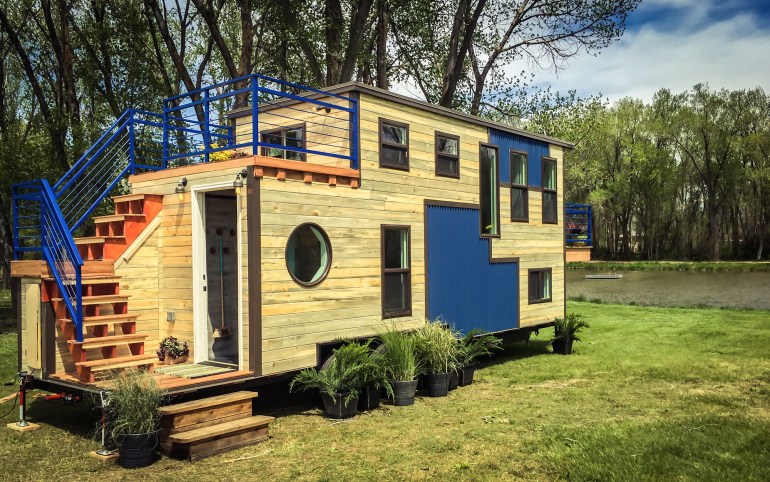
- Grow your own indoor plants: Indoor plants not only brighten up your living space but also improve air quality by filtering out pollutants. Choose low-maintenance plants like pothos or snake plants that thrive in various light conditions.
- Start an organic garden: Organic gardening involves growing plants without the use of synthetic fertilizers or pesticides. By using compost and natural pest control methods, you can create a sustainable garden that nurtures the soil and promotes biodiversity.
- Create a vertical garden: If you have limited space, consider creating a vertical garden using hanging baskets or wall-mounted planters. This allows you to maximize the use of space and grow a variety of plants, herbs, and vegetables.
Energy-Efficient Appliances
When considering sustainable home projects, one important area to focus on is the use of energy-efficient appliances. Energy-efficient appliances can significantly reduce energy consumption and lower utility bills, making them an essential component of an eco-friendly home.
In the kitchen, energy-efficient cooking appliances can make a significant impact on energy usage. By opting for appliances that are designed to use less energy, such as induction cooktops and convection ovens, homeowners can save both energy and money. These appliances are designed to heat up faster and distribute heat more evenly, resulting in shorter cooking times and reduced energy waste.
Additionally, choosing appliances with energy-saving features like programmable timers and power-saver modes can further enhance their efficiency. By investing in energy-efficient cooking appliances, homeowners can not only reduce their carbon footprint but also enjoy the benefits of lower energy costs.
Insulation Upgrades
Insulation upgrades play a crucial role in enhancing the energy efficiency and sustainability of a home. By improving insulation, homeowners can reduce their energy consumption, lower utility bills, and create a more comfortable living environment. Here are three important aspects to consider when it comes to insulation upgrades:
- Insulation types: There are various insulation materials available, such as fiberglass, cellulose, and spray foam. Each type has its own benefits and considerations, so it's important to research and choose the most suitable option for your home.
- Insulation installation: Proper installation is key to maximizing the effectiveness of insulation. Hiring a professional insulation contractor ensures that the insulation is installed correctly, minimizing air leaks and gaps that can compromise its performance.
- Additional insulation areas: While many homeowners focus on insulating the walls and attic, it's important to also consider other areas that can benefit from insulation upgrades. This includes insulating the basement, crawl spaces, and even the garage.
Low-Flow Water Fixtures
When it comes to sustainable home projects, one important aspect to consider is the use of low-flow water fixtures. These fixtures, such as water-saving bathroom fixtures, eco-friendly showerheads, and faucets, are designed to minimize water consumption without compromising functionality.
Water-Saving Bathroom Fixtures
Implementing water-saving bathroom fixtures is essential for conserving water and reducing water consumption in residential properties. By incorporating innovative water-saving technology and adopting effective water conservation strategies, homeowners can make a significant impact on their water usage.
Here are three water-saving bathroom fixtures that can help achieve these goals:
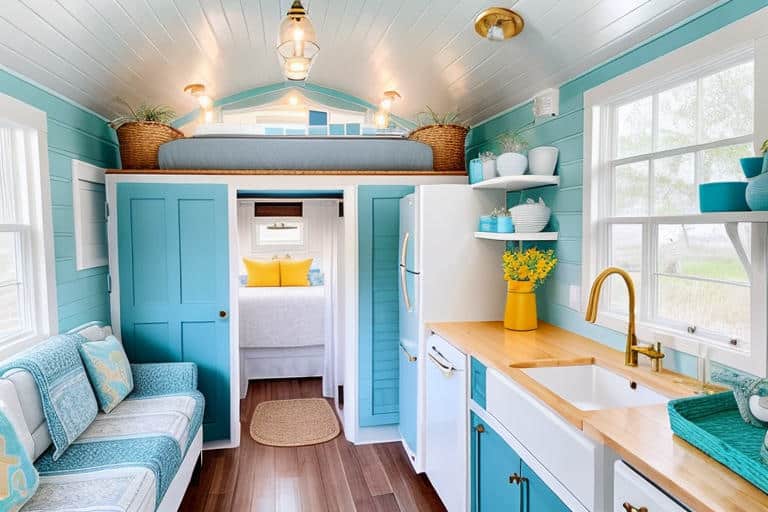
- Low-flow toilets: These toilets are designed to use significantly less water per flush compared to traditional toilets. By replacing old toilets with low-flow models, homeowners can save gallons of water every day.
- Water-efficient showerheads: Installing low-flow showerheads can reduce water usage without compromising on the shower experience. These fixtures use aerators to mix air with water, resulting in a satisfying shower while conserving water.
- Faucet aerators: These small devices can be attached to existing faucets to reduce water flow without sacrificing water pressure. Faucet aerators mix air with water, providing a steady stream while using less water.
Eco-Friendly Showerheads and Faucets
By utilizing eco-friendly showerheads and faucets, homeowners can effectively conserve water and reduce their environmental impact. Eco friendly plumbing fixtures, such as low-flow showerheads and faucets, are designed to minimize water usage without compromising on performance. These fixtures use innovative technologies that regulate water flow and pressure, allowing users to maintain a comfortable shower experience while using significantly less water.
Installing these fixtures can help homeowners save hundreds of gallons of water each year, reducing their water bills and contributing to water conservation efforts. Additionally, eco-friendly showerheads and faucets often come with adjustable settings, giving users the freedom to customize their water flow according to their preferences.
Natural Cleaning Products
Using eco-friendly cleaning products is an essential step towards creating a sustainable and healthier home environment. By opting for natural cleaning products, you not only reduce your exposure to harmful chemicals but also contribute to a greener planet.
Here are three reasons why you should switch to natural cleaning products:
- Healthier Living: Natural cleaning products are free from toxic chemicals that can cause respiratory issues, skin irritations, and allergies. By using these products, you create a safer and healthier environment for yourself and your family.
- Environmental Impact: Traditional cleaning products often come in non-recyclable packaging, leading to excessive waste. Natural cleaning products, on the other hand, often use sustainable packaging materials, such as biodegradable or recyclable containers, reducing your carbon footprint.
- Effective and Versatile: Contrary to popular belief, natural cleaning products are just as effective as their chemical-laden counterparts. From multi-purpose sprays to laundry detergents, there is a wide range of natural cleaning products available that can tackle even the toughest stains and dirt.
Make the switch to natural cleaning products today and enjoy a cleaner, greener, and healthier home.
LED Lighting
LED lighting is a sustainable and energy-saving alternative for traditional light bulbs. By upgrading to LED lights, homeowners can reduce their energy consumption and lower their electricity bills.
Additionally, LED lighting offers environmental benefits, such as reducing carbon emissions and minimizing waste due to its longer lifespan.
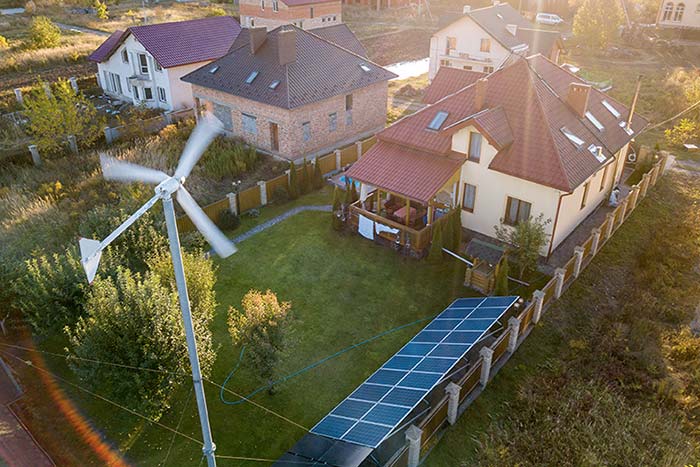
Energy-Saving LED Alternatives
To achieve energy efficiency in your home, consider incorporating energy-saving alternatives such as LED lighting. LED stands for Light Emitting Diode, and it is a highly efficient lighting technology that has gained popularity in recent years due to its numerous benefits.
Here are three reasons why you should consider using LED lighting in your sustainable home design:
- Energy efficiency: LED lights are significantly more energy-efficient compared to traditional incandescent or fluorescent bulbs. They consume less electricity and convert a higher percentage of energy into light, resulting in lower energy bills and reduced environmental impact.
- Long lifespan: LED lights have a much longer lifespan than traditional bulbs. On average, an LED bulb can last up to 25 times longer, reducing the need for frequent replacements and contributing to waste reduction.
- Environmentally friendly: LED lighting doesn't contain harmful substances such as mercury, making them safer for the environment. Additionally, their energy efficiency helps to reduce carbon emissions and combat climate change.
Cost-Effective Lighting Upgrade
One highly recommended cost-effective lighting upgrade for sustainable home projects is incorporating LED lighting, which offers significant energy savings. LED bulbs are more energy-efficient than traditional incandescent bulbs and can last up to 25 times longer.
By replacing all your home's light fixtures with energy-efficient LED bulbs, you can drastically reduce your electricity consumption and save money on your energy bills. LED bulbs also produce less heat, making them safer and reducing the risk of fire hazards.
Additionally, LED lighting comes in a variety of styles and colors, allowing you to create the desired ambiance in your home. So, when looking for cost-saving tips and energy-efficient bulbs, consider upgrading to LED lighting for a more sustainable and budget-friendly lighting solution.
Environmental Benefits of LEDs
Incorporating LED lighting into your sustainable home projects offers a range of environmental benefits. Here are three advantages of LED lights and the positive environmental impact of LED lighting:
- Energy Efficiency: LED lights are highly energy-efficient compared to traditional incandescent or fluorescent bulbs. They convert almost all of the electricity they consume into light, wasting very little energy as heat. This reduces overall energy consumption and lowers greenhouse gas emissions.
- Longer Lifespan: LED lights have a much longer lifespan compared to other lighting options. They can last up to 25 times longer than incandescent bulbs, reducing the frequency of replacements and the amount of waste generated from discarded bulbs.
- Reduced Toxicity: Unlike fluorescent lights, LED lights do not contain mercury, a hazardous substance that can harm the environment if not properly disposed of. LED lights are also more easily recyclable, further minimizing their environmental impact.
Eco-Friendly Furniture
By utilizing eco-friendly materials and manufacturing processes, sustainable furniture contributes to a greener and more environmentally conscious home. Sustainable furniture is made from sustainable materials, such as responsibly sourced wood, bamboo, and recycled materials. These materials help to reduce the environmental impact of furniture production by minimizing deforestation and waste.
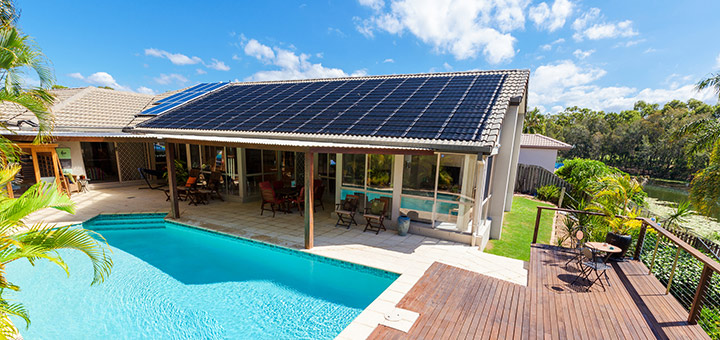
Additionally, sustainable furniture often incorporates upcycled materials, giving new life to old items that would otherwise end up in landfills. Upcycled furniture not only reduces waste but also adds a unique and creative touch to your home decor.
By choosing sustainable furniture, you are not only making an environmentally responsible choice, but you are also supporting companies that prioritize sustainability and ethical practices.
Frequently Asked Questions
How Much Does It Cost to Install Solar Panels on a Home?
The cost of installing solar panels on a home varies depending on factors such as the size of the system and location. However, the long-term benefits of solar panels, including reduced electricity bills and environmental sustainability, outweigh the initial investment.
Can Rainwater Harvesting Systems Be Used in Areas With Low Rainfall?
Rainwater harvesting systems can still be used in areas with low rainfall, although the effectiveness may be reduced. However, the benefits of rainwater harvesting, such as water conservation and cost savings, make it a worthwhile method to consider for sustainable home projects.
What Materials Can Be Composted at Home?
Composting benefits both the environment and home gardeners by reducing waste and producing nutrient-rich soil. Various materials can be composted at home, including fruit and vegetable scraps, yard trimmings, coffee grounds, and eggshells. Composting techniques involve layering organic matter, maintaining moisture levels, and turning the pile regularly.
How Much Space Is Needed for a Home Garden?
Home garden space requirements vary depending on the type and scale of gardening. Urban gardening offers numerous benefits, such as access to fresh produce, improved air quality, and reduced food waste.
Are Energy-Efficient Appliances More Expensive Than Traditional Ones?
Energy-efficient appliances may have a higher upfront cost compared to traditional ones. However, they offer energy-saving benefits that result in long-term savings. Investing in these appliances aligns with the desire for freedom and sustainability in one's home.
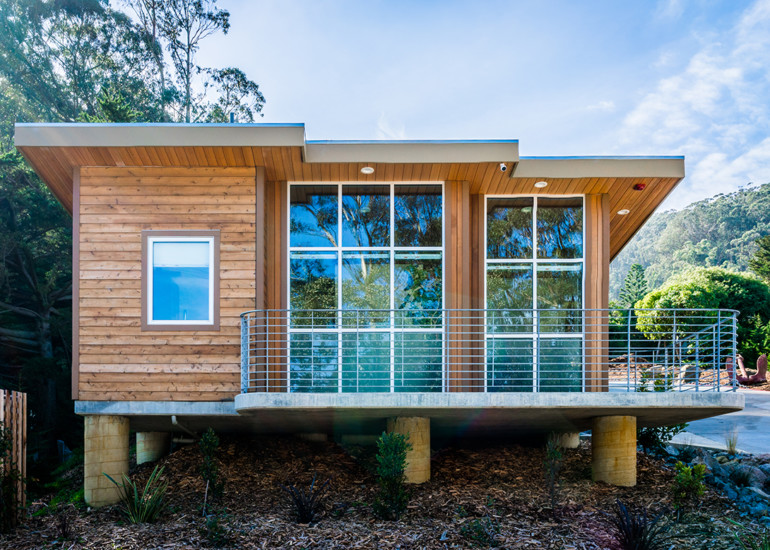
 Family Craft ProjectsHome ImprovementCooking and BakingReuse and RecycleDIY GiftsEco-Friendly ProjectsDIY Home SolutionsSeasonal ActivitiesFun and GamesLearn TogetherPrivacy PolicyTerms And Conditions
Family Craft ProjectsHome ImprovementCooking and BakingReuse and RecycleDIY GiftsEco-Friendly ProjectsDIY Home SolutionsSeasonal ActivitiesFun and GamesLearn TogetherPrivacy PolicyTerms And Conditions

 Family Craft ProjectsHome ImprovementCooking and BakingReuse and RecycleDIY GiftsEco-Friendly ProjectsDIY Home SolutionsSeasonal ActivitiesFun and GamesLearn TogetherPrivacy PolicyTerms And Conditions
Family Craft ProjectsHome ImprovementCooking and BakingReuse and RecycleDIY GiftsEco-Friendly ProjectsDIY Home SolutionsSeasonal ActivitiesFun and GamesLearn TogetherPrivacy PolicyTerms And Conditions
